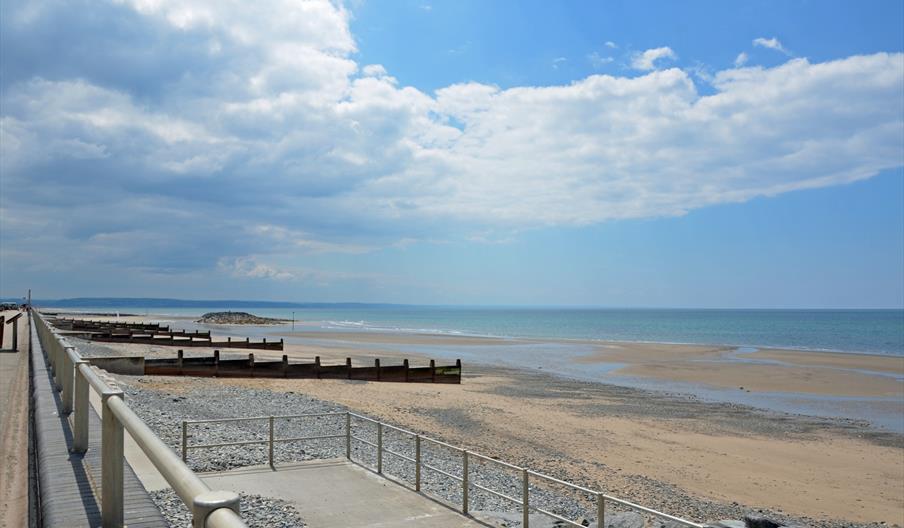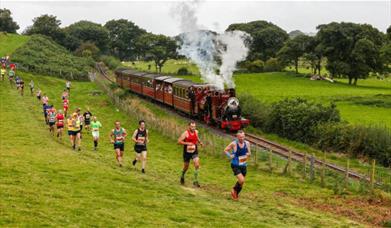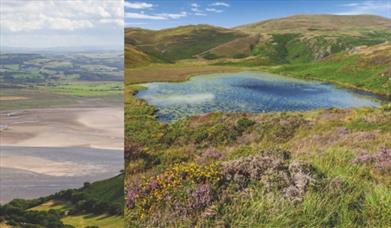Book Tickets Online
About
Tywyn is a coastal town in Southern Snowdonia and is a picture book Victorian resort town. Brought to life by the railway in the late 19th century, Tywyn has been a popular holiday destination ever since.
One compelling reason for its enduring appeal is the long stretch of sandy coastline and sand dunes which give the town its name, Tywyn literally means 'beach' or 'sand-dune'. The beach is a well known as a surfing hotspot.
The Wales Coast Path runs right through the town and onto the Blue Flag Award beach where the views will take your breath away. The coastline is famed for its sunsets which can be enjoyed from the charming Victorian promenade that parallels the beach and is the perfect place for dolphin spotting and views of Cardigan Bay.
On a clear day looking north, the Snowdonia coastline stretches towards Bardsey Island & Pwllheli on the Llyn Peninsula and looking south towards Aberystwyth and Aberporth.
Nearby the Tywyn Lagoon and the Dolgoch Waterfalls are of incredible natural beauty and have always proved popular with visitors to the area. Those wishing to enjoy the scenic splendour of southern Snowdonia are able to take advantage of the myriad walking and cycling paths that criss-cross the countryside.
If you have a taste for historical novelty you might enjoy learning more about Tywyn's role in amphibious training for World War Two, the Talyllyn Railway and Railway Museum, or the town's Wurlitzer Organ which is housed in the Pen-dre drill hall. The Magic Lantern cinema in the town centre was first built in has been here since 1893 as the town's assembly rooms.
LOCAL HISTORY
The town predates the Norman invasion,though its origins are probably much older. It houses an inscribed stone from the 8th or 9th century known as St Cadfan's stone. The inscription on this stone is the oldest known written Welsh. In 963, the previous church on the site was sacked by Vikings. Later, during the 12th century, the church became the subject of a memorable poem by Llywelyn Fardd. The earliest parts of the existing church date back to the 12th century, though originally it had a central tower, but this collapsed in 1693.
Many of the notable characters of Tywyn have had close links with the nearby Ynysmaengwyn estate. The family were notable patrons of poets and writers, and many of the poems written for them have been preserved in a manuscript of cywyddau. Later additions to this manuscript include several 18th century Welsh poems, a few of which mention the Corbet and Owen families of Ynysmaengwyn.
The Corbet family played an important role in Tywyn's development during the eighteenth century. They were responsible for draining much of the salt marsh, or morfa, between the Dysynni river and the town, which significantly increased the land available for farming in the parish. Samuel Lewis' 'A Topographical Dictionary of Wales (1833) reported that horse races were held annually every September on this land by the Dysynni. The raven which is used as an emblem of Tywyn comes from the Corbet family coat of arms (the name 'Corbet' coming from the Norman French for raven).
Pay & Display Car Park: Rhodfa'r Môr LL36 ODE
Facilities
Accessibility
- Disabled toilets
Booking & Payment Details
- Cash Point
Catering
- Picnic site
Parking
- EV Charging
- Free Parking
- Parking with charge
Property Facilities
- Gift shop
- Postbox
- Public toilets
Target Markets
- Accepts groups
- Coach parties accepted
Map & Directions
Road Directions
Tywyn is situated on the A493 coast road and is 15 miles from Machynlleth (A487/A489) and 20 miles from Dolgellau (A470/A494).
Public Transport Directions
The town also has a mainline railway station as well as the Talyllyn narrow gauge railway providing local tourist services.
Tywyn is part of several local and nation bike routes including; NCN route 82, Lon Las Cymru, and Lon Las Cymru (North).
Accessible by Public Transport: Tywyn station is 0 miles away.




 to add an item to your Itinerary basket.
to add an item to your Itinerary basket.












